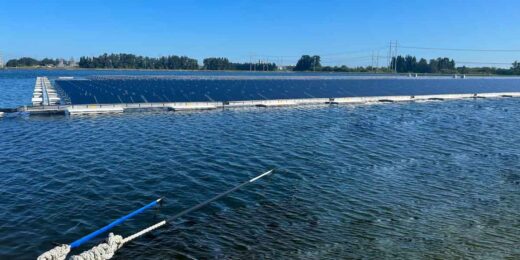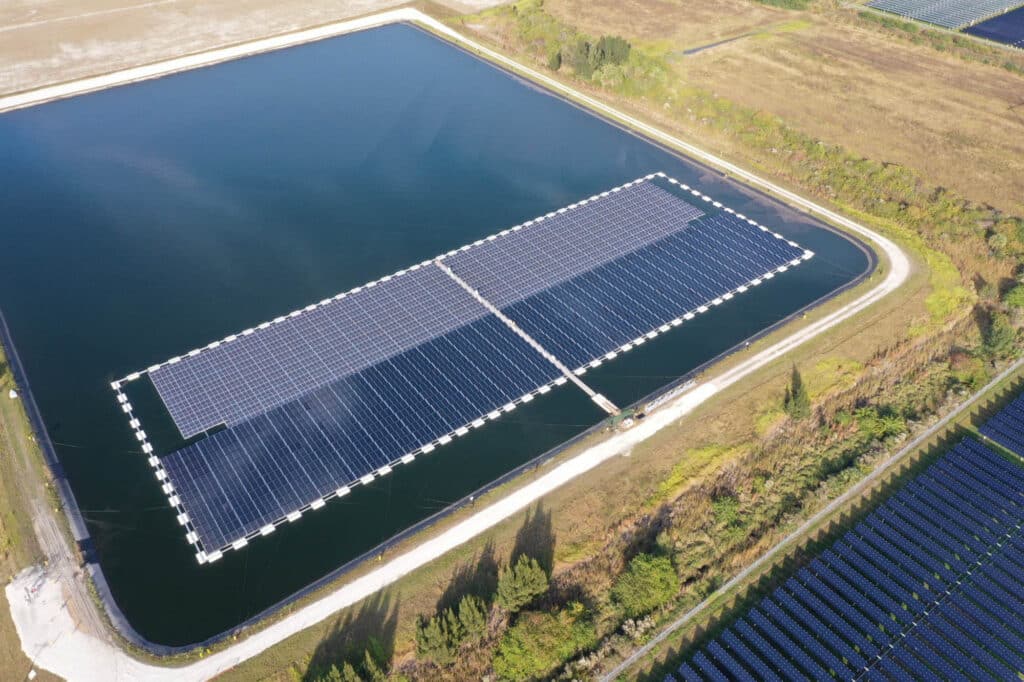As the global push for renewable energy continues, floating solar farms have emerged as an innovative solution to maximize solar power generation. Floating solar farm construction represents a significant advancement in clean energy technology, offering a sustainable way to harness the sun’s energy while optimizing space utilization. In this blog post, we’ll explore how floating solar farms are built, from initial planning to operational deployment, and delve into the unique challenges and advantages of this groundbreaking approach.
What Is a Floating Solar Farm?
Floating solar farms, also known as floating photovoltaic (FPV) systems, are solar power installations mounted on floating structures over water bodies such as reservoirs, lakes, and even oceans. These farms provide renewable energy without occupying valuable land, making them an ideal choice for regions with limited space for traditional solar installations.
The Fundamentals of Floating Solar Farm Construction
Building a floating solar farm requires meticulous planning and a multi-phase approach to ensure efficiency, safety, and durability. Here’s a breakdown of the essential steps involved:
1. Site Assessment and Feasibility Study
The construction of any floating solar farm begins with a comprehensive site assessment. Engineers and project developers evaluate factors such as:
- Water depth and surface area to ensure adequate space for installation.
- Seasonal water level fluctuations to account for potential movement or risks.
- Local climate conditions, including wind speed and solar irradiance, to optimize energy capture.
- Environmental impact on aquatic ecosystems to protect local flora and fauna.
Design and Engineering
Floating solar farms require a custom design tailored to the unique characteristics of the water body. Key components include:
- Floating Platforms: Typically made of high-density polyethylene (HDPE), these platforms are designed for durability, buoyancy, and resistance to UV and weather conditions.
- Anchoring Systems: Anchors and mooring lines stabilize the structure against currents, waves, and wind.
- Solar Panels: Panels are selected based on efficiency, resistance to moisture, and UV protection to maximize their lifespan and output.
3. Permitting and Regulatory Approvals
Navigating the regulatory landscape is a critical step. Floating solar projects often require permits from local, state, and federal agencies to:
- Address environmental concerns.
- Ensure compliance with zoning and water use laws.
- Obtain approvals for connecting to the local power grid.
4. Fabrication and Pre-Assembly
Many components, including the floating platforms and mounting structures, are prefabricated off-site. Prefabrication:
- Reduces on-site construction time.
- Ensures precise engineering to meet safety and performance standards.
5. Installation
The installation process involves:
- Assembling the floating platforms on the water.
- Mounting solar panels onto the platforms in pre-determined configurations.
- Connecting electrical systems, including inverters and transformers, to integrate the power output with the local grid.
6. Testing and Commissioning
Before the farm becomes operational, the entire system undergoes rigorous testing to ensure:
- Proper electrical connections.
- Stability of the floating structure.
- Compliance with safety and energy output standards.
Key Challenges in Building Floating Solar Panels
While floating solar panels offer numerous advantages, their construction comes with unique challenges:
1. Environmental Impact
Developers must mitigate potential harm to aquatic ecosystems. Common solutions include:
- Designing platforms that allow sunlight to pass through, reducing disruption to aquatic plants.
- Maintaining gaps between panel arrays to ensure sufficient light penetration and oxygenation of the water.
2. Structural Integrity
Floating solar farms must withstand harsh weather conditions, including storms and high winds. To ensure stability:
- Robust anchoring and mooring systems are installed.
- Materials are selected to resist corrosion and wear from prolonged water exposure.
3. Maintenance Access
Unlike land-based solar farms, floating installations require:
- Specialized equipment, such as boats or floating walkways, for routine inspections and repairs.
- Training for maintenance personnel to operate safely in a water-based environment.
Advantages of Floating Solar Farm Construction
Despite these challenges, floating solar farms offer compelling benefits:
- Efficient Land Use: By utilizing water surfaces, floating solar farms preserve land for agriculture, housing, and urban development.
- Improved Performance: Water’s natural cooling effect reduces panel temperatures, enhancing efficiency and preventing overheating.
- Water Conservation: The shade provided by solar panels reduces evaporation from water bodies, which is particularly beneficial in arid regions.
- Scalability: Floating solar farms can be expanded incrementally to meet growing energy demands.
Building Floating Solar Panels: The Future of Renewable Energy
One of the most exciting aspects of floating solar technology is its scalability and potential to revolutionize renewable energy production. Recent innovations have further enhanced its viability:
Innovations in Building Floating Solar Panels
- Dual-Axis Tracking Systems: Advanced tracking systems adjust solar panel orientation throughout the day, maximizing energy capture.
- Hybrid Systems: Combining floating solar farms with other renewable energy sources, such as hydroelectric dams, enhances efficiency and reliability.
- Global Expansion: Countries like China, Japan, and the United States are leading investments in floating solar technology, showcasing its growing importance.
Frequently Asked Questions
1. Can floating solar farms operate on any water body?
Not all water bodies are suitable. Factors such as water depth, surface area, and climate conditions play a critical role in site selection.
2. Do floating solar farms harm aquatic life?
With proper design, floating solar farms can minimize environmental impact by allowing sunlight to pass through and preserving oxygen levels in the water.
3. How are floating solar farms anchored?
They use a combination of anchors and mooring systems that stabilize the structure while allowing for slight movements due to water level changes.
4. Are floating solar farms more expensive than land-based ones?
While initial costs may be higher, floating solar farms often save money in the long term through increased efficiency and water conservation benefits.
Case Study: A Success Story in Floating Solar Farm Construction
A recent floating solar project by AccuSolar in a 50-acre reservoir highlights the potential of this technology. The project generated 20% more energy than comparable land-based installations, thanks to:
- The cooling effect of water
- Single-axis tracking systems that maximize solar exposure
Floating solar farm construction is a transformative approach to renewable energy, combining innovation with sustainability to address the world’s growing energy needs. By optimizing space and improving energy efficiency, floating solar farms represent the future of solar technology.Ready to explore the potential of floating solar farms for your next project? Contact us today to learn more about our solutions and how we can bring your renewable energy vision to life.





